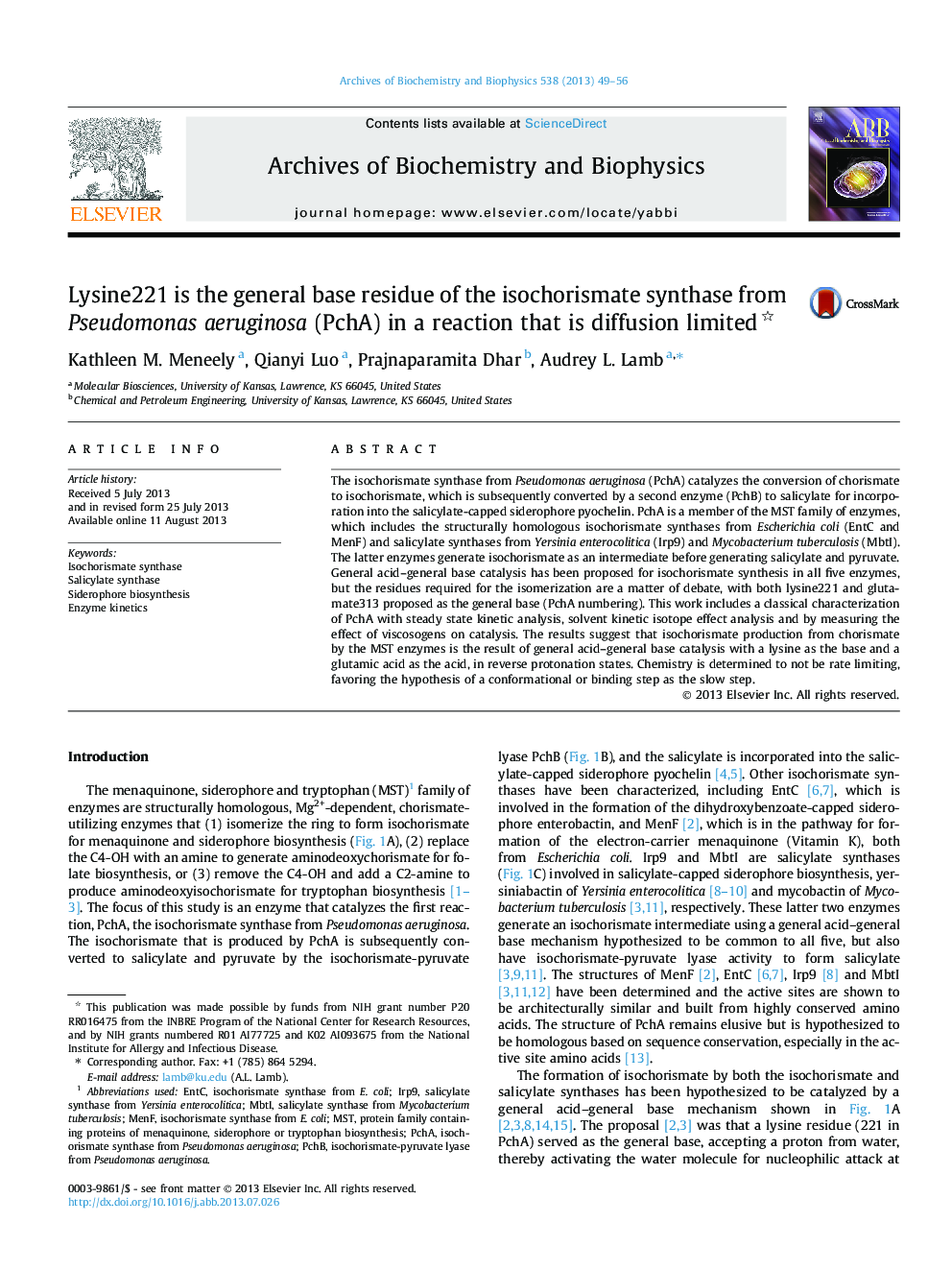| Article ID | Journal | Published Year | Pages | File Type |
|---|---|---|---|---|
| 1925296 | Archives of Biochemistry and Biophysics | 2013 | 8 Pages |
•The general acid–general base catalysts are identified in MST enzymes.•Catalysis is diffusion controlled in the isochorismate synthase reaction.•Evidence for reverse protonation states of the catalytic acid/base is presented.
The isochorismate synthase from Pseudomonas aeruginosa (PchA) catalyzes the conversion of chorismate to isochorismate, which is subsequently converted by a second enzyme (PchB) to salicylate for incorporation into the salicylate-capped siderophore pyochelin. PchA is a member of the MST family of enzymes, which includes the structurally homologous isochorismate synthases from Escherichia coli (EntC and MenF) and salicylate synthases from Yersinia enterocolitica (Irp9) and Mycobacterium tuberculosis (MbtI). The latter enzymes generate isochorismate as an intermediate before generating salicylate and pyruvate. General acid–general base catalysis has been proposed for isochorismate synthesis in all five enzymes, but the residues required for the isomerization are a matter of debate, with both lysine221 and glutamate313 proposed as the general base (PchA numbering). This work includes a classical characterization of PchA with steady state kinetic analysis, solvent kinetic isotope effect analysis and by measuring the effect of viscosogens on catalysis. The results suggest that isochorismate production from chorismate by the MST enzymes is the result of general acid–general base catalysis with a lysine as the base and a glutamic acid as the acid, in reverse protonation states. Chemistry is determined to not be rate limiting, favoring the hypothesis of a conformational or binding step as the slow step.
Graphical abstractFigure optionsDownload full-size imageDownload high-quality image (52 K)Download as PowerPoint slide
